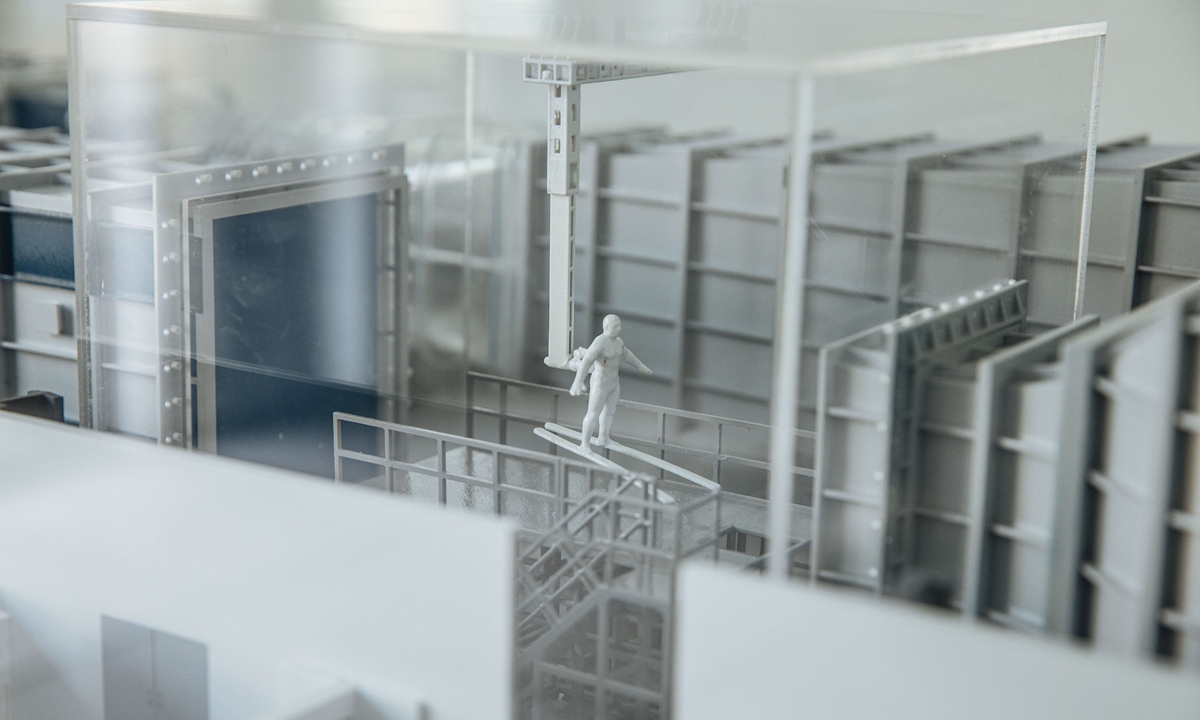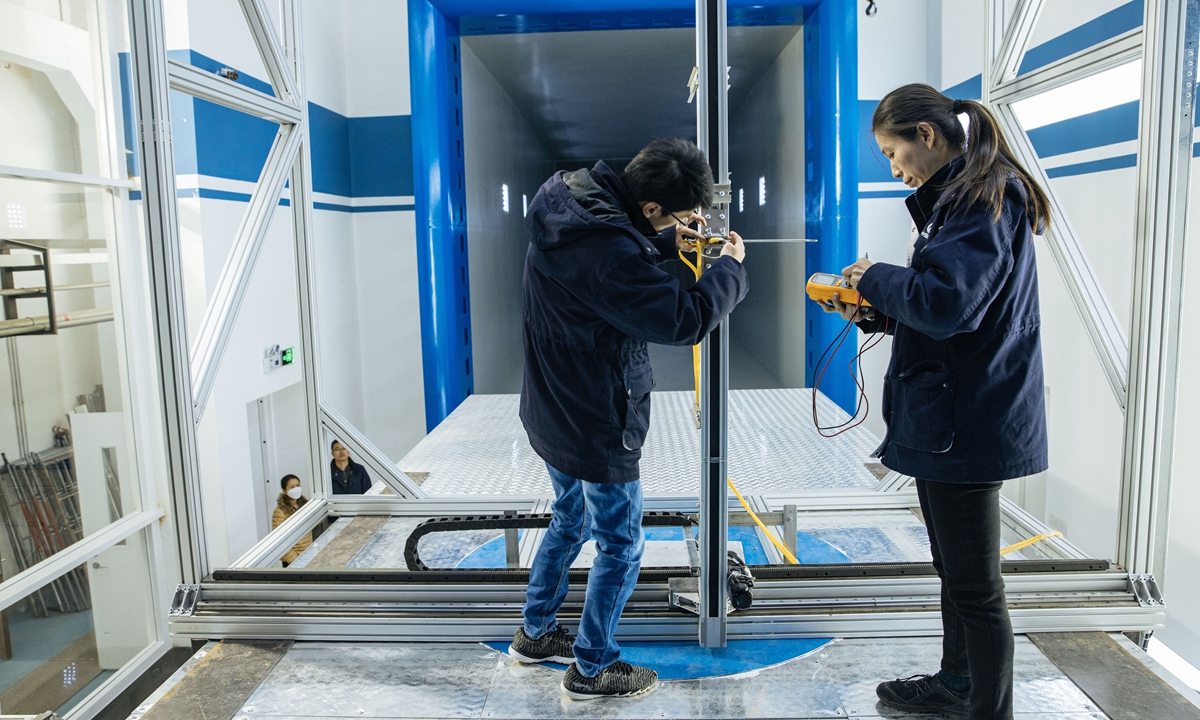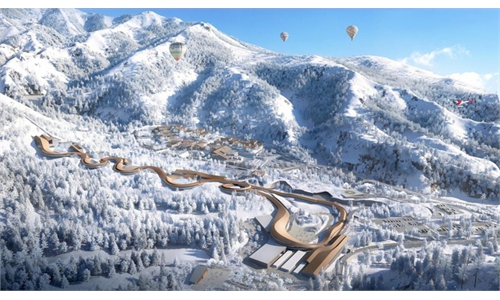SPORT / OLYMPICS
Aerodynamics for Olympics
Cutting-edge space tech to help improve China’s winter sports performance

A module of the wind tunnel which features a skiing athlete in the station Photo: Li Hao/GT
A team of six people from China's state-owned aerospace giant China Aerospace Science and Technology Corporation (CASC) has successfully transformed a deserted plant in the century-old Erqi Locomotive Factory into a flagship project in the run-up to the Beijing 2022 Winter Olympics.
Design of the facility was completed in December 2019, but the COVID-19 epidemic delayed construction until June. In less than six months, they completed building the country's first-ever large-scale wind tunnel specially designed for professional sports training and performance assessment.
"If it hadn't been for the difficulties brought by the epidemic, we could have completed it two months earlier," Dong Guoqiang, director of the technical transformation office with the CASC Institute of Wind Tunnel Engineering and Technology and leader of the six-man team, told the Global Times in an exclusive interview on Wednesday.
Commissioned by China's General Administration of Sport, Dong's team managed to carry out the design and building work of a supersized annular-return wind tunnel, which is 52 meters in length and 20 meters in width, making greatest use of the space of the deserted plant, which used to be an internal combustion engine manufacturing workshop in the suburbs of southwest Beijing.
The effective wind cross profile of the wind tunnel reached 3 meters in height and 2.5 meters in width, with wind speed of up to 42 meters per second, meeting the requirements for almost every winter sport events.
Global Times reporters found Wednesday the coating of the wind tunnel is white and blue, and the particular blue tone, what Chinese space insiders refer to as China's Space Blue, shows that the facility is the best example of Space + Winter Olympics, a combination of highly reliable Chinese space technology and the upcoming sports gala.
The facility, echoing China's commitment to hosting a sustainable Olympic Games, is as good as the best of its kind around the world, the CASC team told the Global Times on Wednesday.
The team explained that deviation of evenness of the wind, one of the key parameters for assessing the wind tunnel's quality, is no more than 0.75 percent, meaning all the wind that goes through the tunnel moves in the same direction with the same strength, ensuring the accuracy of data generated from the athletes.
Confidence boost
The facility will boost China's hopes at the Winter Olympics in 2022, especially those in timed events.
In contrast to China's dominant performances at the Summer Olympics, where they have bagged more than 200 gold medals, Team China remain an emerging force at Winter Olympics, with only 13 gold medals in hand since first participating in the Lake Placid Games in 1980.
China's short-track speed skating team, who have contributed more than half of the 62 medals Team China have won at the Winter Olympics, are believed to be one of the teams that will benefit greatly from the wind tunnel facility.
Previously, Chinese athletes have had to adapt themselves to aeronautical or automotive wind tunnels, which could only provide general statistics on the athletes' actions in the tunnel, rather than a detailed analysis of movement which the current facility provides, Dong said.
A statue of speed skater Gao Tingyu, China's first Olympic male speed skating medalist who won a bronze in Pyeongchang in 2018, was put up at the wind tunnel station. Many of China's title hopes are pinned on the 22-year-old athlete.
A hanging structure at the station has made it possible for athletes in sports like ski jumping to gain a deeper understanding of their own skills.
By chance, the Global Times reporter entered the wind tunnel station which the athletes use to find the best form when racing, and experts use to learn what materials can reduce wind drag to maximize athletes' performance.

Two staff members check the equipment in the wind tunnel station. Photo: Li Hao/GT
Right before the core center on the facility, in the direction where the winds come from, there is a large screen that shows data including real-time wind speed, sidewind force, and aerodynamic drag. The meter accuracy reached 0.01 meter per second and 0.01 Newton.Another screen is set up to the right of the wind direction, showing the same data, making it convenient to read for off-ground testing.
The facility, which can remain in service for decades, will not only benefit winter sports athletes but also summer sports athletes, Dong noted, as the station can be altered into tracks for sports like running and cycling.
The facility is expected to be handed over to the sports authority before December.


